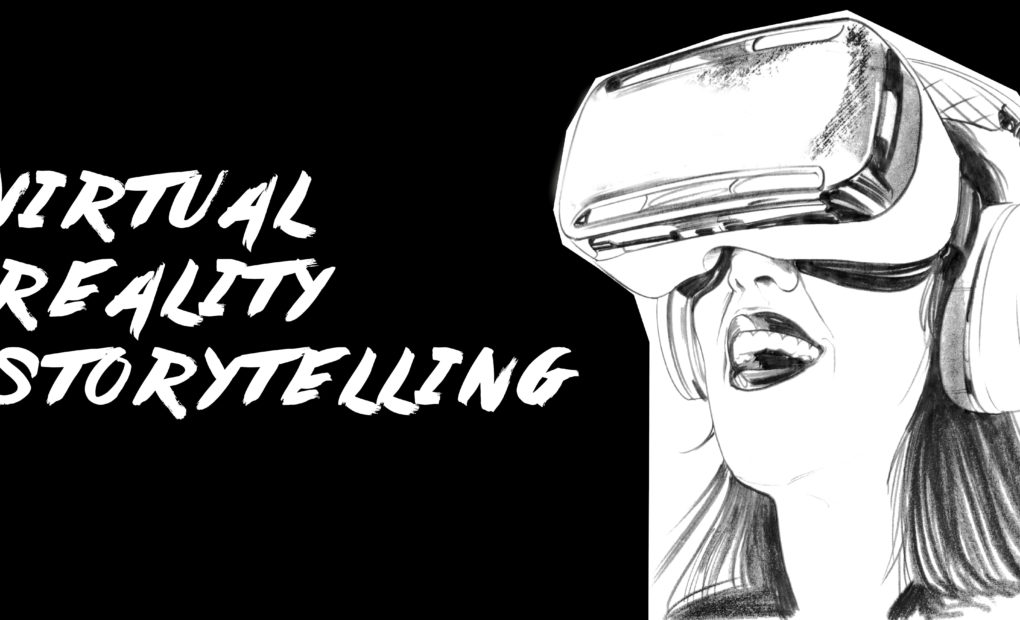
Addressing the challenges of virtual reality storytelling
Storytelling in VR is one of the most discussed subjects in the medium right now. Telling a great story is hard enough in any medium, and from the very beginning of our explorations into story in VR, we discovered a number of unique challenges. The biggest challenge is in trying to let go of established conventions.
Regular film making techniques are very refined for a flat screen, and the fact is that many of those techniques don’t really carry over in VR. VR is as different from regular film and TV as live theatre is. While both film, theatre, and cinematic VR can share common elements like actors, sets, lighting, dialogue and music, how all of those are utilised are vastly different. When you add to that the possibilities for interaction and exploration afforded by CGI based VR experiences, the differences grow even more. As such VR producers have been searching for new techniques, rules and tricks to ensure a story is easily followed but also, crucially, engaging.
Getting storytelling right in VR comes from two angles, technical and creative.
Technical Aspects
The VR storyteller needs to ensure presence – or as close to presence as possible, to allow the viewer to feel like they’re there, in the world of the story. Presence is a property unique to VR. Its something that no other medium can replicate.
There are a number of issues that can prevent the user from feeling presence, these include:
- Picture/sound quality (fidelity)
- Head tracking smoothness (app speed/computer/phone speed)
- Visible errors in the picture such as stitching errors or incorrect distortions
- Many kinds of motion, bumpy, twisting, changes of direction, hard acceleration or braking, that the user themselves isn’t experiencing in reality.
If these technical aspects are not addressed then the user won’t feel like they are present in the world of the story.
Creative Aspects
Assuming the technical elements are addressed, we can focus on telling the story. The first and most important rule we have in VR is KEEP IT SIMPLE. One of the big complaints from the VR content submitted to Sundance was that viewers were having to work too hard to follow the story, with too many different things going on around them.
Its a common misconception for first time VR content creators that VR is about having things happen all around the viewer in 360 degrees. VR is not about that. VR is about making someone feel like they’re in a story and that story should be presented in a simple, focused way.
How you setup each scene should follow this rule of simplicity and focus. The positioning of key parts of the story should be primarily in the in the users front 160 degrees of view. This is by no means a hard rule, in fact its fun to occasionally make someone look behind them, but as ergonomics and user comfort are so important in achieving presence, its really important to think about how people will watch the content (usually sitting down in a comfortable chair which doesn’t swivel).
The way that we transition from scene to scene and the time spent in each scene is also important. Fast cuts often don’t give users time to orient themselves and take in where they are. Each time you are in a new scene it’s like putting someone in a new room and then whipping off the blindfold. They need time to adjust, get comfortable with their surroundings before they move on to the next scene. Transitions can be aided with techniques such as match cuts (aligning key people in the same places as scenes change), smooth transitions and keeping any motion consistent an the same speed if repeated in subsequent scenes.
One of the creative questions that is much debated is about the acknowledged presence of the user in the scene – should you be talked to, looked at or just ignored? One of the ways this is being looked at is as the Swayze effect – think of Patrick Swayze in Ghost, he’s unable to stop family and friends from bad decisions and is shouting at them but they can’t hear him. We think this can be avoided where possible by using techniques like voice over and by having characters in the scene that address you directly, i.e. they look you in the eyes. Something very simple like a character giving you a quick glance can really draw you into the world so much more.
To conclude, we have a huge responsibility as content creators to ensure we create compelling content that is going to grab the viewer’s imagination and inspire them to come back for more, which in turn will help put VR on track to become adopted by the mainstream.
If you would like to find out how we can help you tell your story in VR please get in contact or sign up to our newsletter and keep in touch.

Comments
Responses
Peter says
Love the video, thanks for sharing... so much to consider... :)